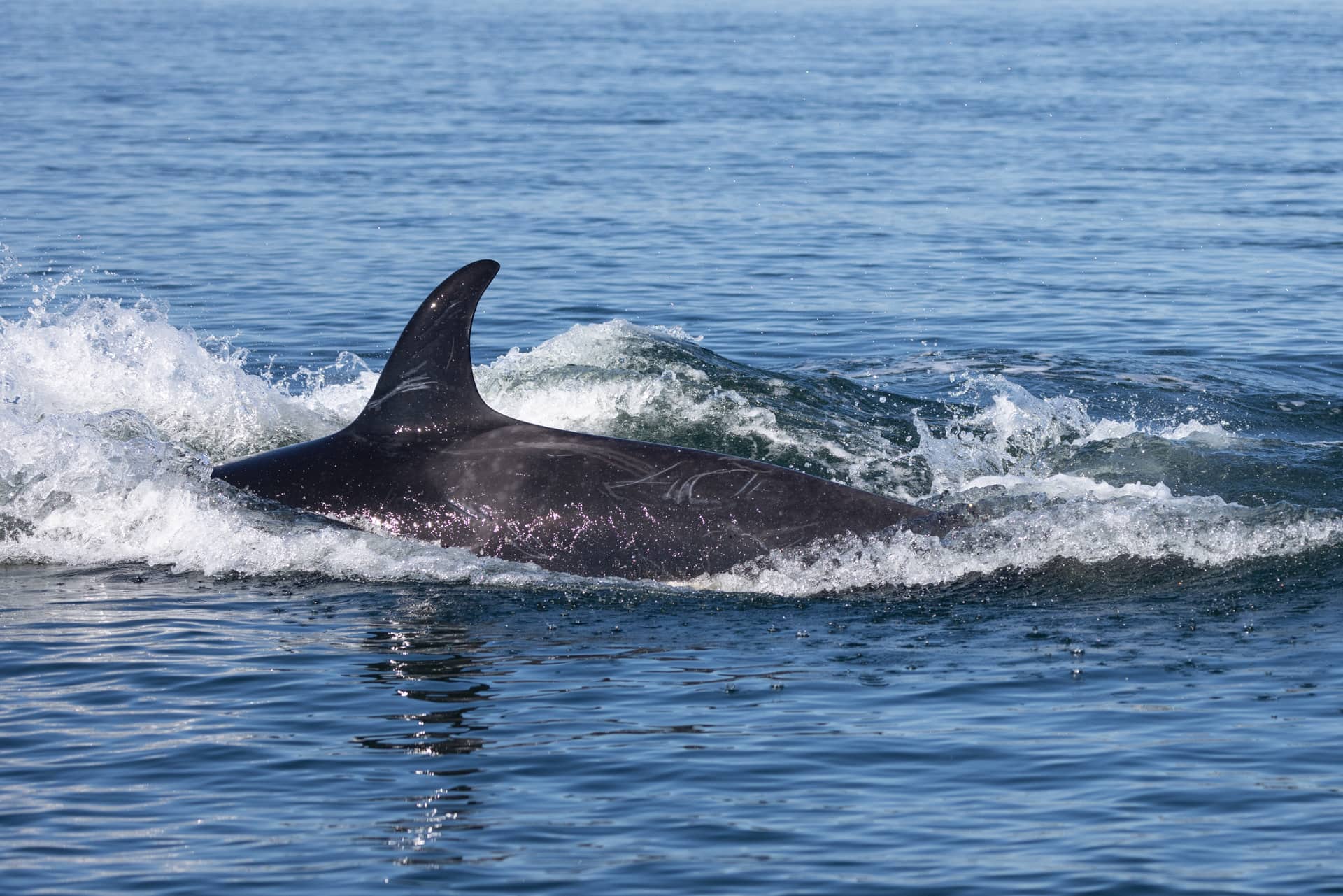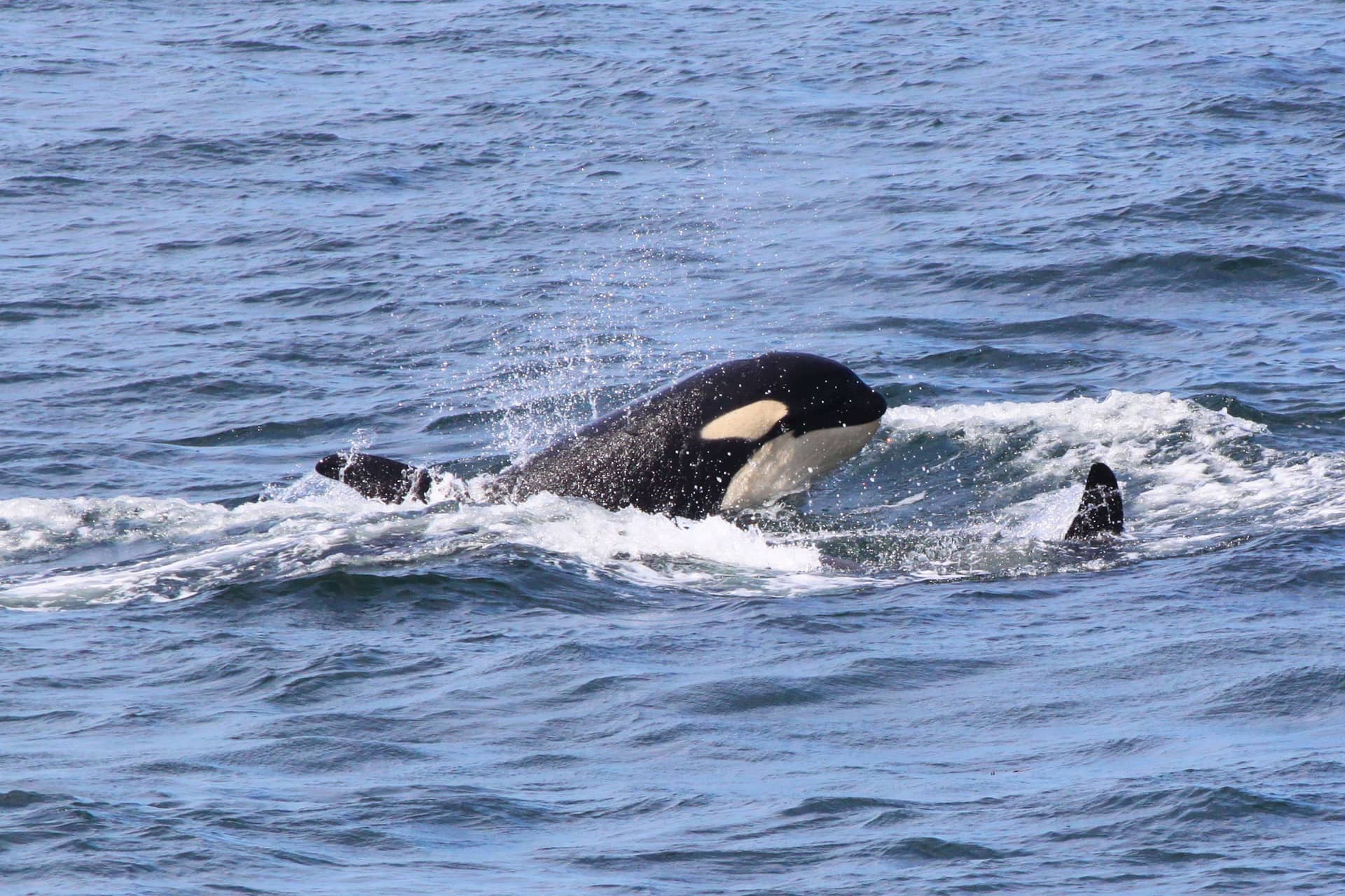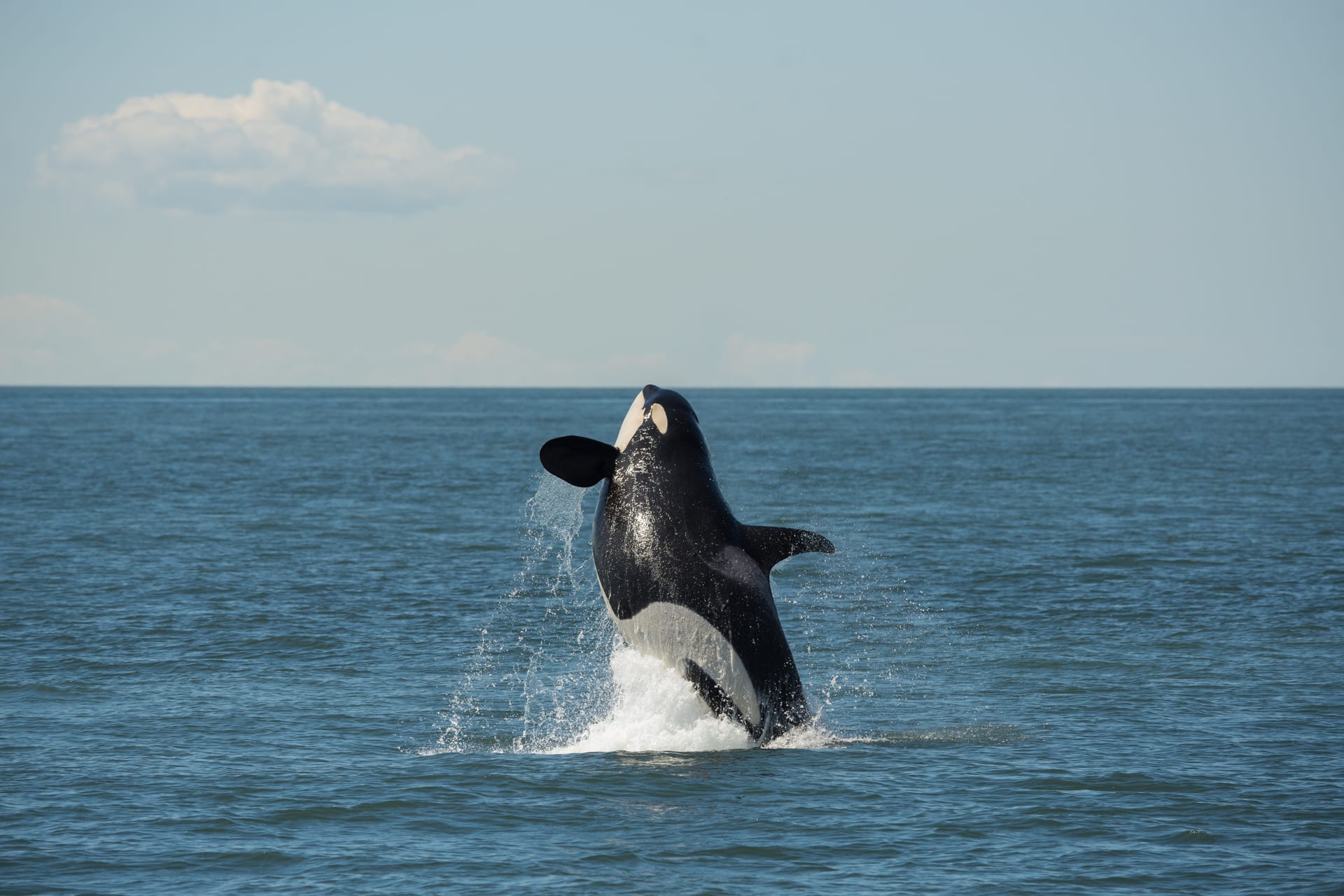
In the Southern Resident killer whale society, it is the females who select their mate. Their preference is for the largest, oldest males. To ensure that her son is a prime candidate in this selection process, a mom must ensure that her son gets big and stays healthy. She not only provides him with food, but as a recent study now suggests, she helps him avoid conflict and potentially fatal injury.
What was the study?
Researchers examined 50 years of photographic evidence for interactions that resulted in injury inflicted by the teeth of other pod members, leaving “rake marks.” They found 6,934 images showing such marks on 103 Southern Resident killer whales, which they termed “socially inflicted injuries.”
They noticed that males had fewer injuries than females. Curious whether this was linked to maternal protection, they checked if these males had a living mother at the time the injury was inflicted and, if so, what was her age, i.e., a new mom, an older mom still having calves, or was she post-reproductive following menopause?
What did they find?
They found that when a mother was post-menopausal, considered to be aged over 42, her sons had fewer socially inflicted injuries.
If these older females also had daughters—or were grandmothers to their calves—the evidence suggested she did not similarly protect these other family members from conflict. However, previous research has shown the matriarch supports her entire pod “via food sharing, or indirectly through leadership in group foraging.”
It seems then that this form of social support—preventing conflict and injury—uniquely applies to her adult sons. Why? She prioritizes passing her genes on through her sons, which has the lowest cost to her pod as other families must raise her sons’ offspring, whereas her daughters’ calves stay in her pod for life.

J57, a juvenile male, swims alongside mother J35.
Why is preventing these injuries important?
Even seemingly benign social interactions can have deadly consequences, especially for a population already at risk of extinction. Rake marks may leave open wounds that “provide a route of infection for pathogens that could lead to increased mortality.”
In 2016, L95 Nigel died after a tracking tag attached by government scientists left an open wound that exposed him to germs in the marine environment, resulting in infection and subsequent death.
To prevent their sons from harm, researchers suggested that these “post-reproductive females have knowledge and experience that younger females lack,” such as understanding individual personalities within other pods, and so can anticipate potential sources of conflict.
Sadly, we are losing these older, experienced females far too soon. In 1995, when the Southern Resident killer whale population hit a high of 98, there were 16 post-reproductive females. Today, there are just eight.
According to this study, Southern Resident killer whale “females can expect to live 22 years” beyond menopause. Yet today, L25 Ocean Sun is the last surviving female to have lived to and beyond this lifespan. The seven other living post-menopausal females range from 44 to 52. Of these, only three have adult sons— aged over 20—who can benefit from their moms’ protection from injury.
Continued below...
Previous research has shown that adult males survive longer when their mother is alive. This newer study offers a further explanation as to why this may be. Sadly, six of the eight males of breeding age today have already lost their mom.
This endangered population is now struggling on all fronts. Not enough calves survive to birth, young adult males die far too prematurely, and too few families have a matriarch to help them find food and provide protection.
Yet it’s not too late. If the government would ensure that more Chinook salmon swim through their home waters, there is still time to turn this tide.





